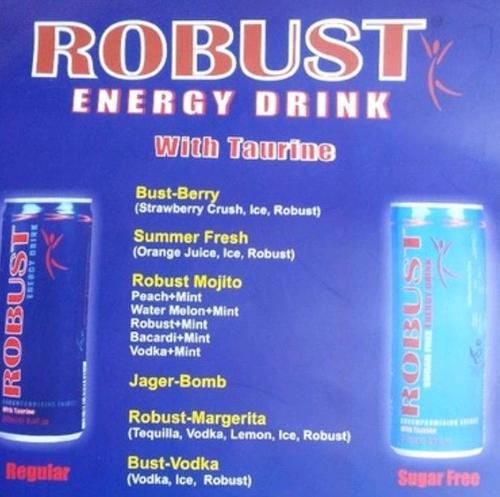
This mechanism may be affected by active ingredients found in EDs. It is widely believed that alcohol-induced increase in VTA neuronal activity leads to increased dopamine release which mediates the reinforcing euphoric effects of alcohol ( Gonzales et al., 2004 Tupala and Tiihonen, 2004). Alcohol also modulates dopamine neurotransmission by directly altering the activity of dopamine neurons in the ventral tegmental area (VTA) ( Morikawa and Morrisett, 2010). In addition, alcohol inhibits glutamatergic neurotransmission by acting on ionotropic glutamate receptors ( Siggins et al., 2003 Woodward, 2009). Biochemical interactions between alcohol and active ingredients in energy drinksĪlcohol is known to potentiate GABAergic neurotransmission by increasing GABA release ( Kumar et al., 2009 Woodward, 2009). This review aims to highlight the aforementioned literature on AMED, while also shedding light on specific interactions between alcohol and active ingredients found in EDs, the impact it has on human physiology and safety, and existing regulations on EDs in different parts of the world.

It is thus important to establish their combinatorial effects and potential implications–which are vital to understand from both medical and sociolegal perspectives–such as drinking habits among users, addiction, binge-drinking, alcohol poisoning, and general wellbeing. Regardless of the motives, this phenomenon of mixing energy drinks with alcohol is quite prevalent in today’s society, although unclear if the consumption patterns have increased over time. Although unclear why young drinkers are driven to consume AMEDs, some literature suggests consumption during parties, taste enhancement of alcohol, and energy and pleasure seeking behaviors are some motivators ( Ballistreri and Corradi-Webster, 2008 O’Brien et al., 2008). Similar figures have been found in research investigating the frequency of ED usage among college students in Turkey, where 37.2% reported mixing EDs with alcohol ( Attila and Çakir, 2011). Another survey of 450 medical students in Italy, 56.9% reported ED consumption of which 48.4% mixed EDs with alcohol 36% of those who reported ever combining ED and alcohol had done so on more than three occasions in the previous month ( Oteri et al., 2007). A study surveying college students in the US regarding patterns of energy drink (ED) use found the consumption of AMED was reported by 57% of women and 50% of men ( Malinauskas et al., 2007). The co-ingestion of alcohol mixed with energy drinks (AMED) is a very common practice worldwide, particularly prominent in the younger population where studies from the United States (US) revealed 10.6% of students in grades 8, 10, and 12, and 31.8% of young adults aged 19–28 had consumed AMED at least once in the past year ( Kponee et al., 2014 Johnson et al., 2018 Schulenberg et al., 2018). Introduction Alcohol mixed with energy drinks epidemiology
Definition of taurine in energy drinks full#
The review also touches on the regulation of this practice around the world, and the impact it has on its users, and points researchers to gaps in our knowledge on the interactions between alcohol and EDs and the full extent of their effects. This review highlights the potential effects of AMED on human physiology based on what is known from human and animal models, and sheds light on specific biochemical interactions between alcohol and active ingredients found in energy drinks Caffeine, Taurine, and Glucuronolactone. Nonetheless, the current associations between AMED (Alcohol Mixed with Energy Drinks) and risky behavior secondary to intoxication and cases of alcohol poisoning have led various national governing bodies to regulate this practice. The association between caffeine, a common active ingredient in energy drinks, and alcohol is relatively well defined, however association with other active ingredients such as taurine, niacin, and pyridoxine, is less understood, pointing to a gap in our knowledge regarding this practice. Adding energy drinks to alcohol may also have synergistic effects in causing alcohol dependency and addiction. Co-ingestion of energy drinks with alcohol has multiple counter-active effects such as reduction of body sway, fatigue and sedative effects induced by alcohol, along with increased subjective feeling of alertness, which may lead to increased binge-drinking, intoxication, decreased perception of intoxication, dehydration, and alcohol poisoning.


Jessica Atef Nassef Sefen *, Jayaditya Devpal Patil and Helen Cooper


 0 kommentar(er)
0 kommentar(er)
